Research on the Internal Flow Mechanisms and Pressure Fluctuation Characteristics of Seawater Reverse Osmosis Energy Recovery Turbines
Abstract
:1. Introduction
2. Methodology of Vortex Identification
3. Experimental and Numerical Setup
3.1. Physical Model
3.2. Meshing Generation
3.3. Governing Equations and Boundary Conditions
3.4. Performance Test System of ERT
3.5. Numerical Verification
4. Results: Analysis and Discussion
4.1. Steady Characteristics of ERT Under Multiple Conditions
4.2. Pressure Fluctuation Characteristics in ERT Under Multiple Conditions
4.2.1. Monitoring Point Setting
4.2.2. Radial Pressure Fluctuation of Volute
4.2.3. Turbulent Kinetic Energy Distribution in the Impeller
4.2.4. Pressure Fluctuation in Draft Tube
4.3. Vortex Evolution Characteristics in ERT Components
4.3.1. Vortex Evolution Characteristics in Impeller
4.3.2. Vortex Evolution Characteristics in Draft Tube
5. Conclusions
- (1)
- The energy loss in the volute is mainly concentrated in the tongue. There is a confluence between the inlet flow of the volute and the flow in the annular channel at the tongue, and separation occurs near the tongue. With an increase in the flow rate, there is a separation vortex on the tongue wall, and the impact of the two incoming flows is enhanced. The maximum amplitude of P2c at the leaf frequency is 0.0132. The closer to the impeller inlet, the more intense the pressure pulsation, and the larger the fluctuations in amplitude.
- (2)
- The blade’s relative fluid flow angle β1 is smaller than the blade’s settle angle under the 0.8Qd condition. There is flow separation at the suction surface of the blade’s trailing edge. The interaction between the fluid and the blade is weak, and the energy loss is very low under the 1.0Qd condition. Vortices exist at both the pressure and suction surfaces of the blade inlet under the 1.2Qd condition. The matching of the blade’s inlet relative liquid flow angle and the blade’s settle angle has a crucial effect on the flow pattern inside the turbine.
- (3)
- The maximum amplitude of pressure fluctuation at the impeller inlet, P11m, is 0.0188, while that at the impeller outlet, P13m, is relatively small. The pressure pulsation in the impeller is dominated by low-frequency pulsation; the amplitude at shaft frequency is the largest, and the amplitude at frequency doubling is gradually weakened. The entrance of the draft tube is strongly affected by the dynamic and static interference of the impeller rotor, and the pulsation intensity is very high.
Author Contributions
Funding
Data Availability Statement
Conflicts of Interest
Nomenclature
| u | Relative velocity (m·s−1) | M | Torque of the PAT (N∙m) |
| μ | Dynamic viscosity (Pa∙s) | Pin | Inlet pressure (Pa) |
| Y+ | y plus value (-) | Pout | Outlet pressure (Pa) |
| Q | Flow rate (m3∙h−1) | f | Body force |
| Qdt | Designed flow rate (m3∙h−1) | Cp | Dimensionless coefficient of pressure fluctuation |
| H | Head (m) | Time-averaged pressure of the monitoring point | |
| Hdt | Designed head (m) | ||
| η | Designed efficiency (%) | λ | Eigenvalue of equation |
| ηdt | Designed efficiency (%) | S | Deformation rate tensor |
| t | Time (s) | ||
| ρ | Fluid density (kg∙m−3) | Acronyms | |
| p | Static pressure (Pa) | PAT | Pump as turbine |
| g | Gravitational constant (m∙s−2) | ERT | Energy recovery turbine |
| nd | Rotational speed (r/min) | ||
| Nst | Specific speed | ||
| P | Shaft power (kW) | ||
References
- Ma, X.; Wang, L.; Cao, J.; Chen, C. A Brief Analysis of Small scale Seawater Desalination Plants and Development. Anhui Chem. Ind. 2023, 49, 20–24. [Google Scholar]
- Chang, Y.; Ju, M.; Zhou, Y. Research progress on energy recovery technology and devices in reverse osmosis seawater desalination system. Energy Eng. 2006, 3, 48–52. [Google Scholar]
- Li, W.; Liao, Z. Comparison and Selection of Energy Recovery Device Scheme for Seawater Reverse Osmosis in a Certain Project. China Pet. Chem. Stand. Qual. 2023, 43, 118–120. [Google Scholar]
- Du, J.; Yang, H.; Shen, Z.; Chen, J. Micro hydro power generation from water supply system in high rise buildings using pump as turbines. Energy 2017, 137, 431–440. [Google Scholar] [CrossRef]
- Senchun, M.; Junhu, Y.; Yongji, S.; Tingting, W.; Yafeng, W. Research on selection of pump as turbine. J. Xihua Univ. (Nat. Sci.) 2016, 35, 23–26. [Google Scholar] [CrossRef]
- Tao, W.; Fanyu, K.; Yuyang, H.; Sunsheng, Y. Researching status of centrifugal pump as turbine. J. Drain. Irrig. Mach. Eng. 2013, 31, 674–680. [Google Scholar] [CrossRef]
- Derakhshan, S.; Mohammadi, B.; Nourbakhsh, A. Efficiency improvement of centrifugal reverse pumps. J. Fluids Eng. 2009, 131, 021103. [Google Scholar] [CrossRef]
- Singh, P.; Nestmann, F. Internal hydraulic analysis of impeller rounding in centrifugal pumps as turbines. Exp. Therm. Fluid Sci. 2011, 35, 121–134. [Google Scholar] [CrossRef]
- Yang, S.-S.; Kong, F.-Y.; Jiang, W.-M.; Qu, X.-Y. Effects of impeller trimming influencing pump as turbine. Comput. Fluids 2012, 67, 72–78. [Google Scholar] [CrossRef]
- Yang, S.-S.; Kong, F.-Y.; Qu, X.-Y.; Jiang, W.-M. Influence of Blade Number on the Performance and Pressure Pulsations in a Pump Used as a Turbine. J. Fluids Eng. 2012, 134, 124503. [Google Scholar] [CrossRef]
- Yang, S.S.; Kong, F.Y.; Jiang, W.M.; Qu, X.Y. Research on rotational speed to the influence of pump as turbine. IOP Conf. Ser. Earth Environ. Sci. 2012, 15, 042023. [Google Scholar] [CrossRef]
- Tao, W.; Fanyu, K.; Shouqi, Y.; Sunsheng, Y.; Kai, C. Design and experiment of a special impeller for hydraulic turbines with forward curved blades. Trans. Chin. Soc. Agric. Mach. 2014, 45, 75–79. [Google Scholar] [CrossRef]
- Wang, T.; Kong, F.; Duang, X.; Gou, Q. Experiment and analysis of effects of rotational speed on performance of pump as turbine. Trans. Chin. Soc. Agric. Eng. 2016, 32, 67–74. [Google Scholar] [CrossRef]
- Qi, B.; Zhang, D.; Geng, L.; Zhao, R.; van Esch, B.P.M. Numerical and experimental investigations on inflow loss in the energy recovery turbines with back-curved and front-curved impeller based on the entropy generation theory. Energy 2022, 239, 122426. [Google Scholar] [CrossRef]
- Qi, B.; Bai, X.; Li, Y.; Wang, X.; Zhang, X.; Zhang, D. Research on the influence mechanism of internal flow characteristics on energy conversion in radial energy recovery turbines under multiple conditions. Energy 2024, 296, 131191. [Google Scholar] [CrossRef]
- Lin, T.; Li, X.; Zhu, Z.; Xie, R.; Lin, Y. Investigation of flow separation characteristics in a pump as turbines impeller under the best efficiency point condition. J. Fluids Eng. 2021, 143, 061204. [Google Scholar] [CrossRef]
- Hao, Y.; Tan, L. Symmetrical and unsymmetrical tip clearances on cavitation performance and radial force of a mixed flow pump as turbine at pump mode. Renew. Energy 2018, 127, 368–376. [Google Scholar] [CrossRef]
- Ji, P. Investigations on Fluid-Structure Interaction of Unsteady Flow-Induced Vibration and Flow Unsteadiness Intensity of Centrifugal Pumps. Ph.D. Thesis, Jiangsu University, Zhenjiang, China, 2013. [Google Scholar]
- Jun, L.; Dangguo, Y.; Xiansheng, W.; Xinfu, L. Effect of turbulent boundary layer thickness on a three-dimensional cavity flow. Acta Aeronaut. Astronaut. Sin. 2016, 37, 475–483. [Google Scholar] [CrossRef]
- Kim, H.T.; Kline, S.J.; Reynolds, W.C. The production of turbulence near a smooth wall in a turbulent boundary layer. J. Fluid Mech. 1971, 50, 133–160. [Google Scholar] [CrossRef]
- Adrian, R.J.; Meinhart, C.D.; Tomkins, C.D. Vortex organization in the outer region of the turbulent boundary layer. J. Fluid Mech. 2000, 422, 1–54. [Google Scholar] [CrossRef]
- Zhang, G.; Yang, Y.; Zhang, X.; Zhang, Z.; Chen, J.; Jin, Z.; Dykas, S. Nanoparticles-induced heterogeneous condensation and geometry optimizations to enhance liquefaction efficiency and mitigate exergy loss in a novel hydrogen liquefaction two-phase expander. Energy 2024, 313, 134006. [Google Scholar] [CrossRef]
- Zhang, G.; Yang, Y.; Chen, J.; Jin, Z.; Dykas, S. Numerical study of heterogeneous condensation in the de Laval nozzle to guide the compressor performance optimization in a compressed air energy storage system. Appl. Energy 2024, 356, 122361. [Google Scholar] [CrossRef]
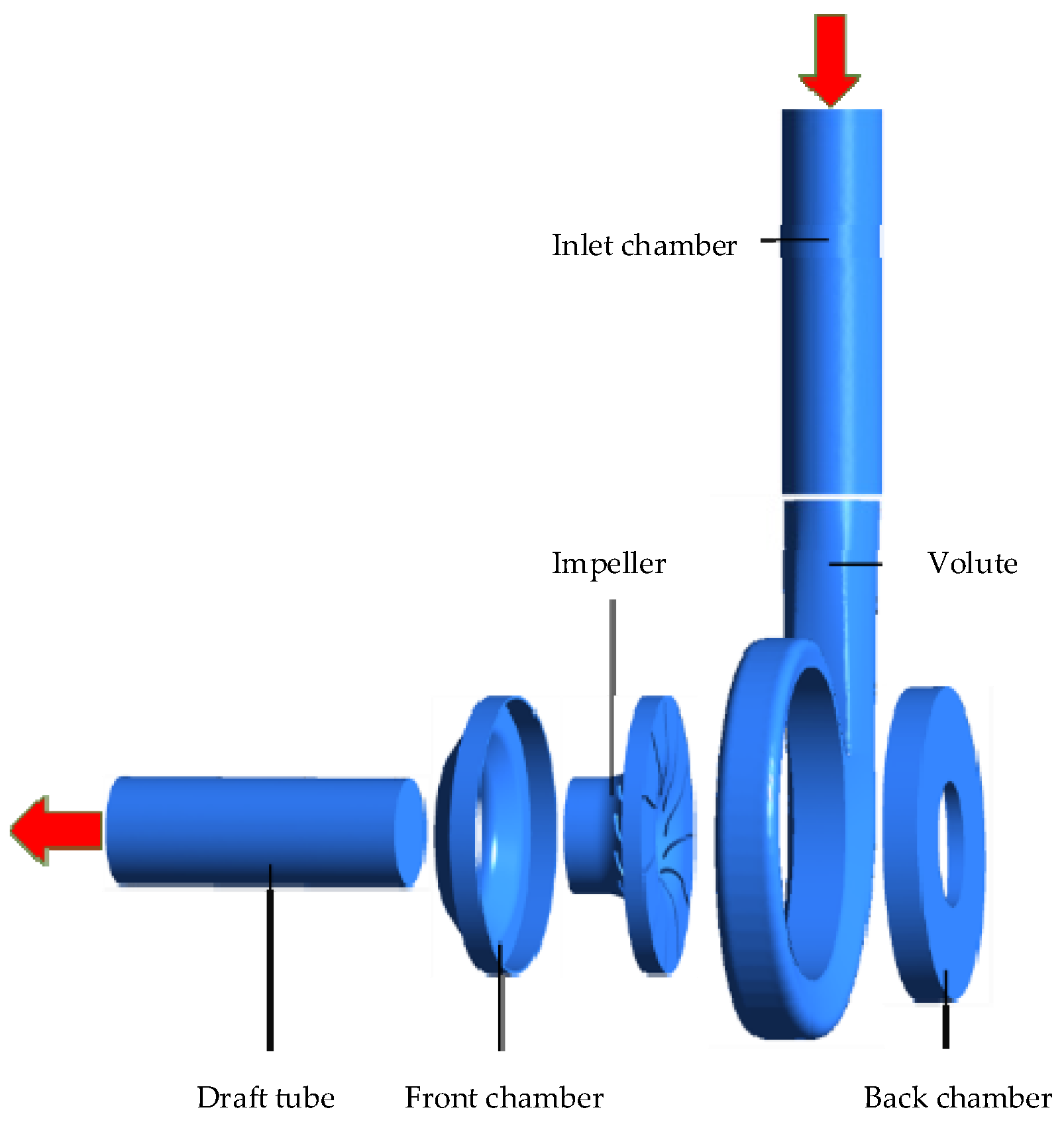
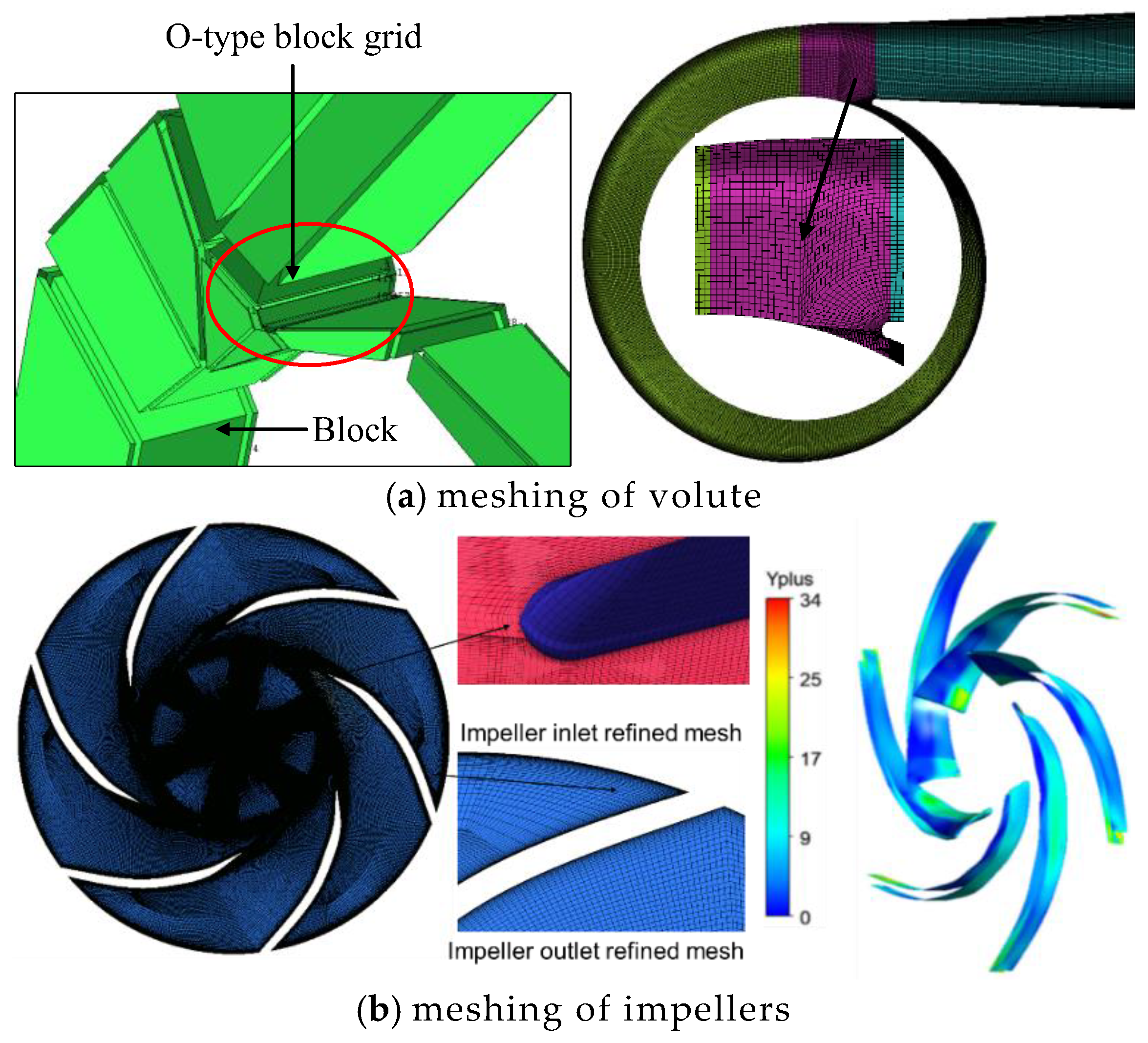
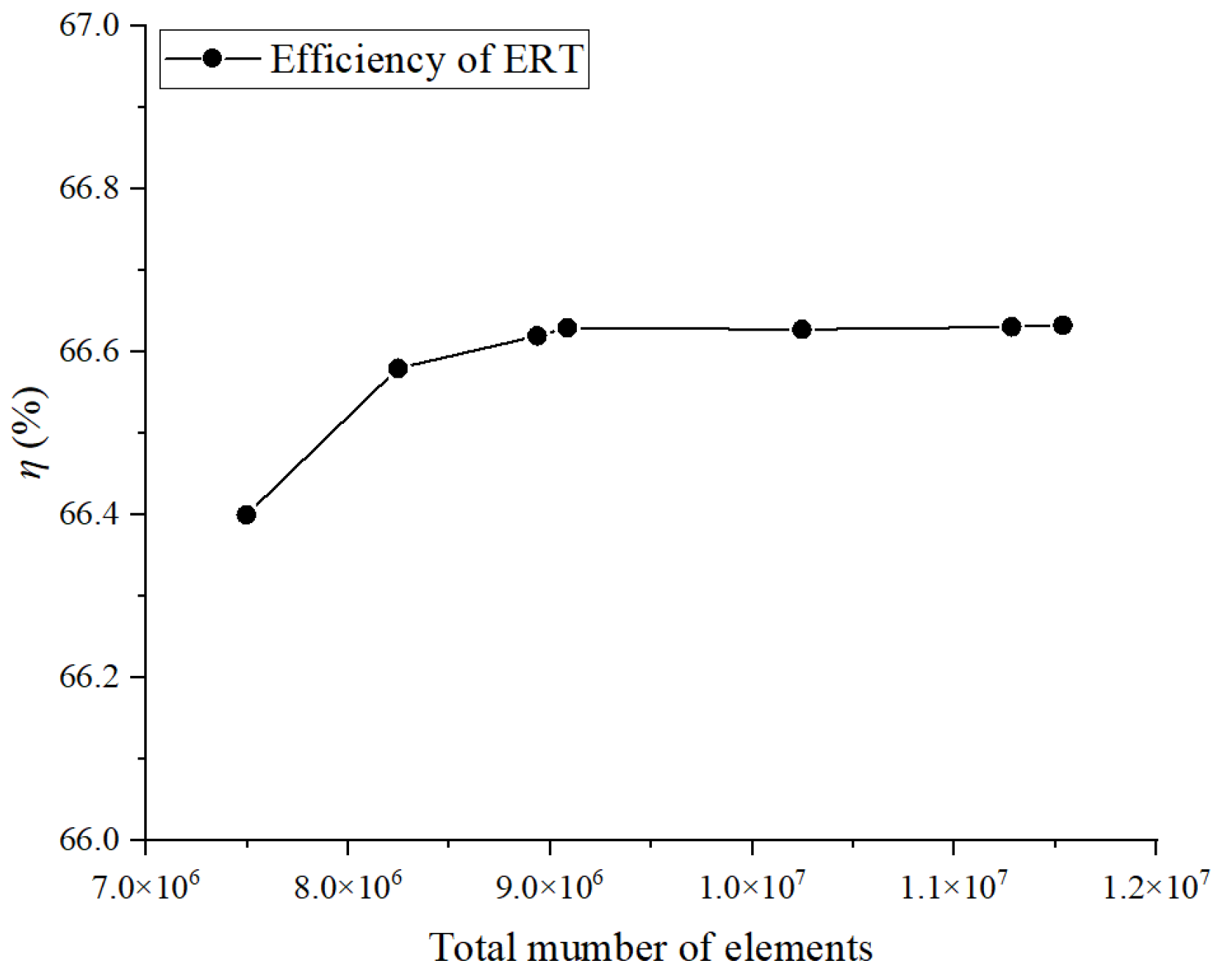

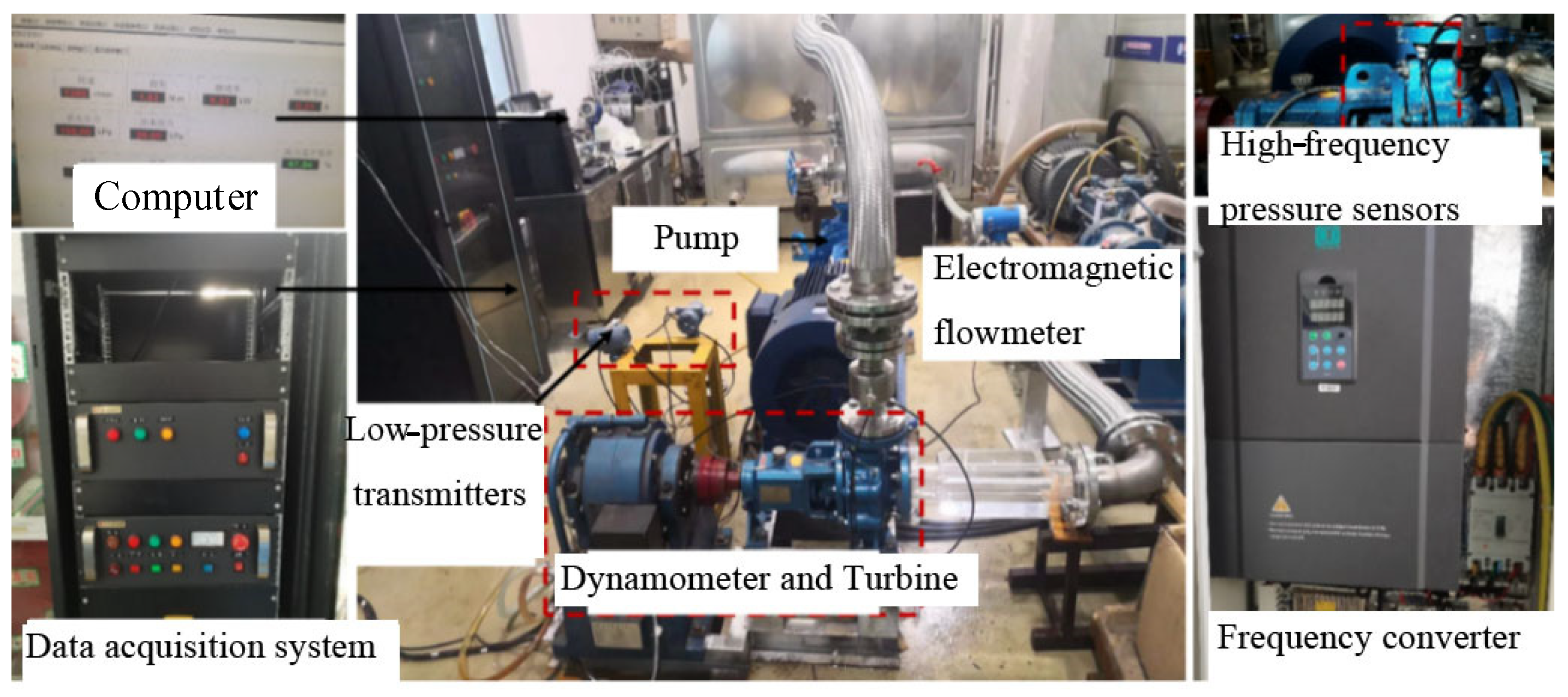
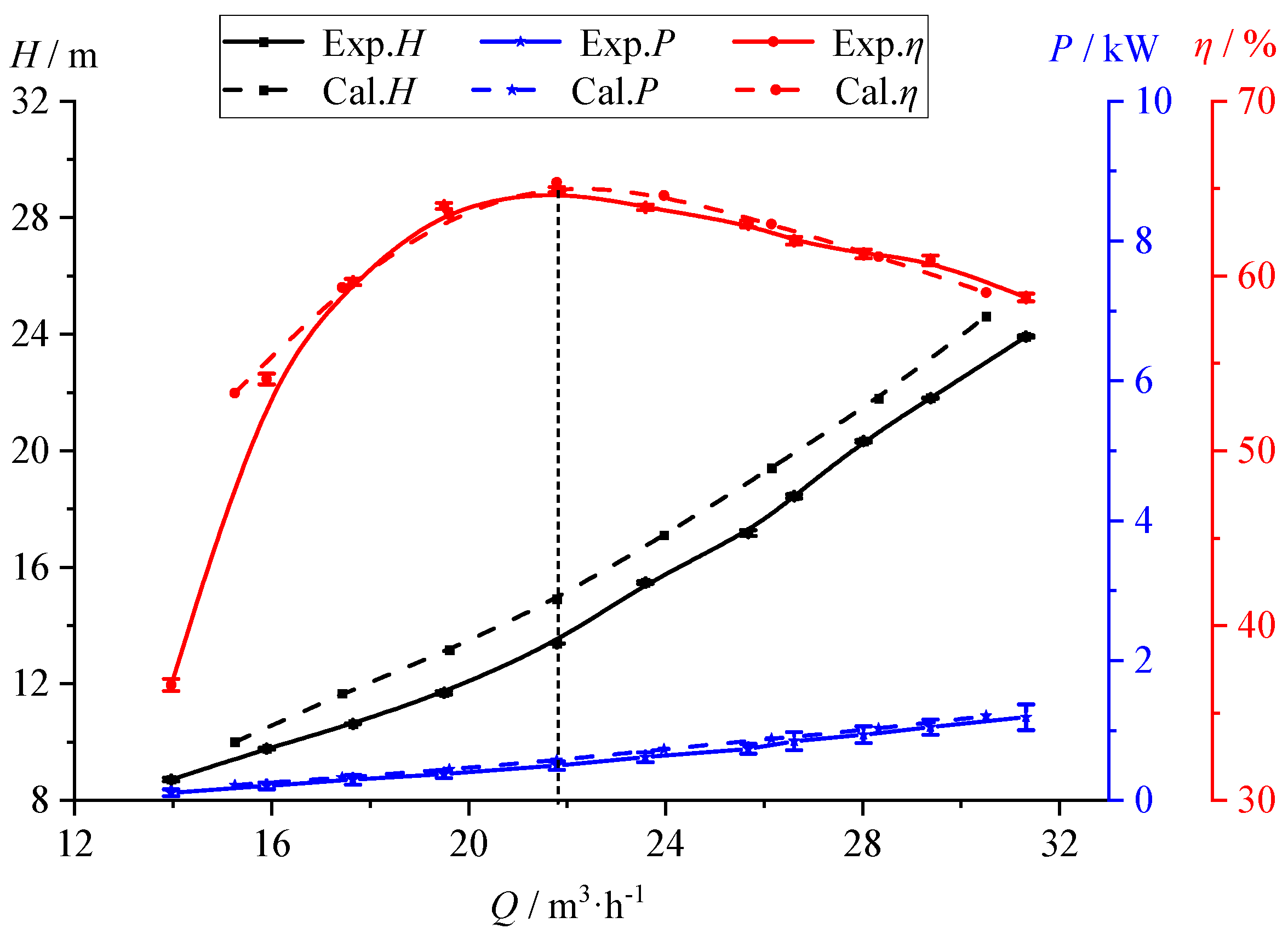
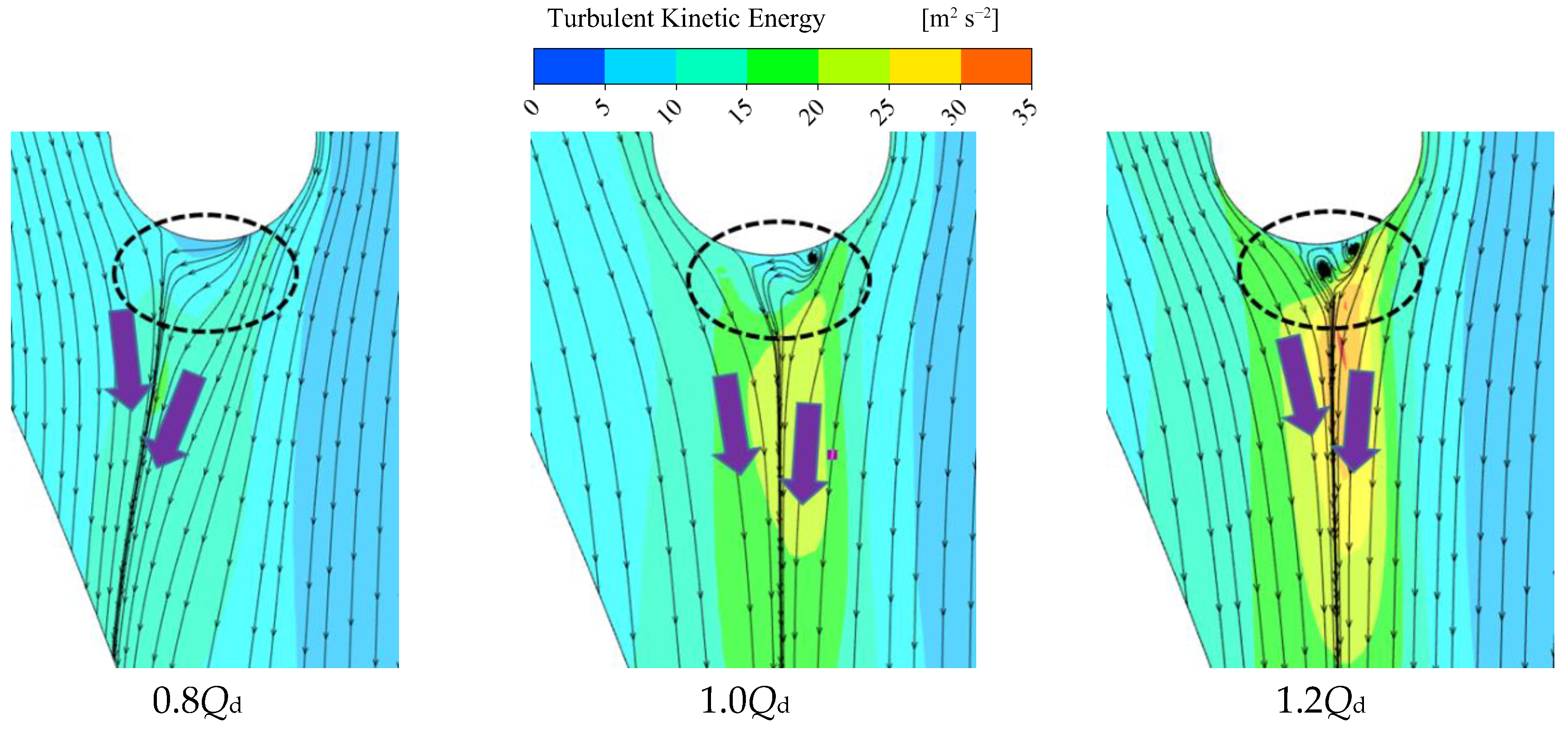

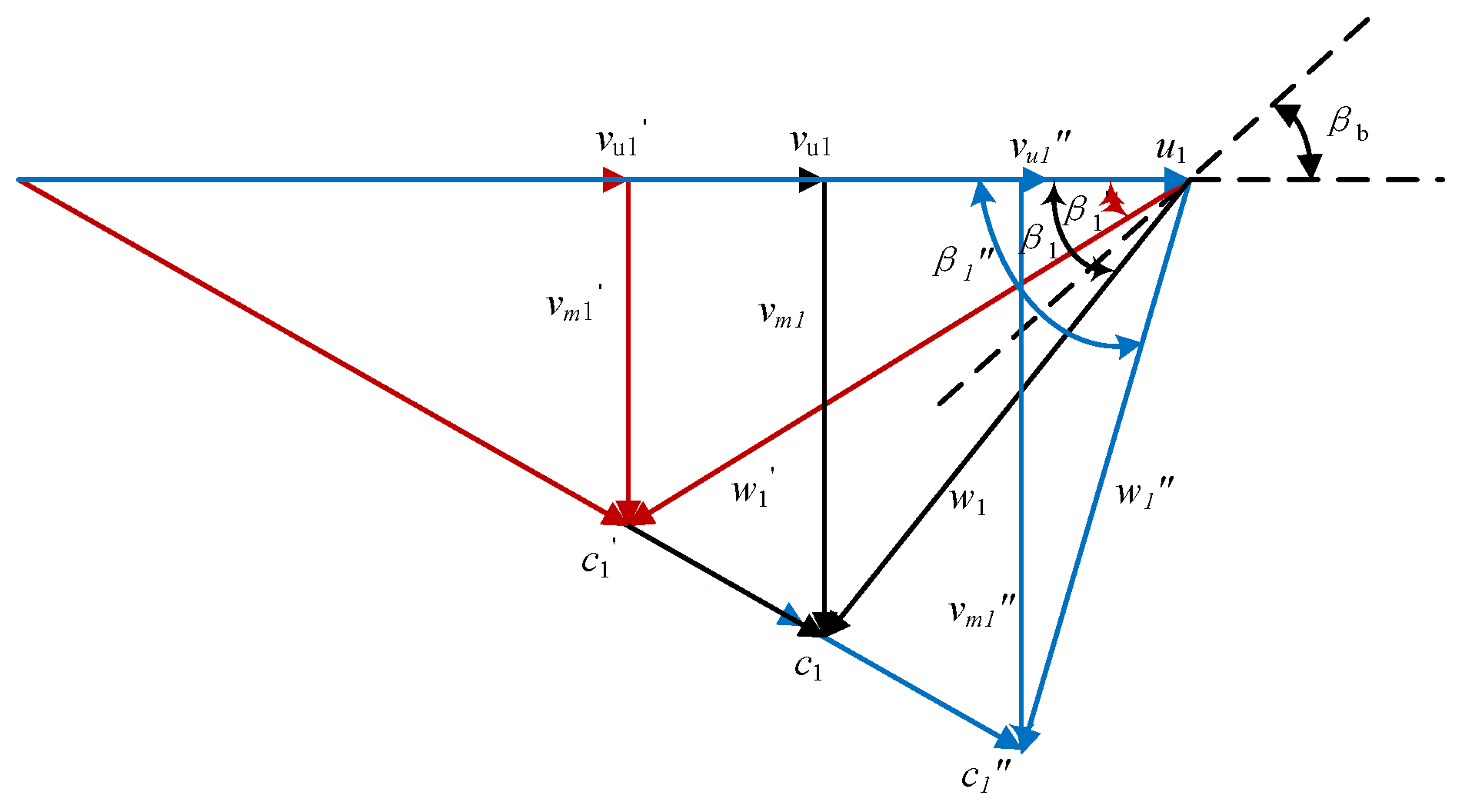
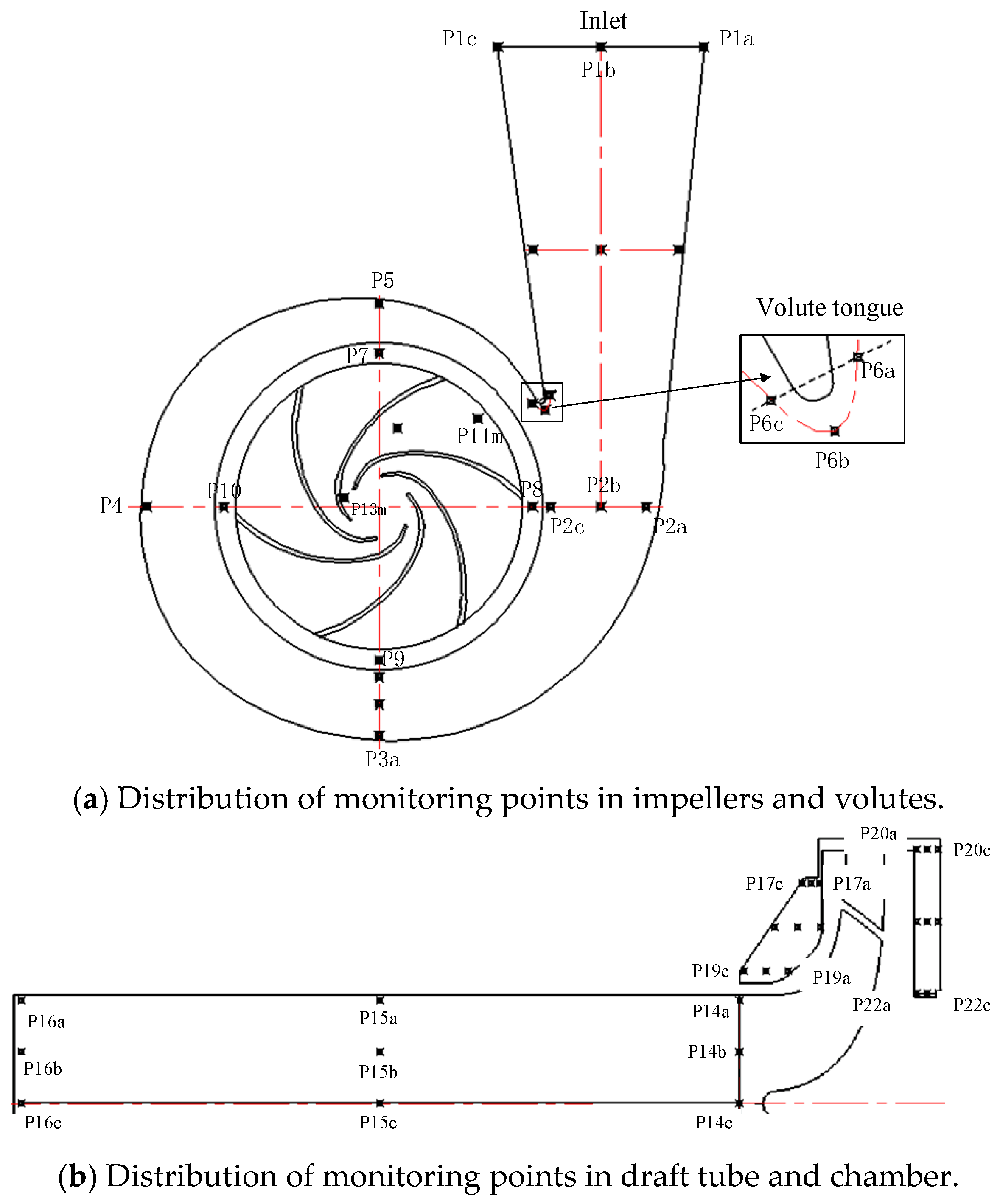
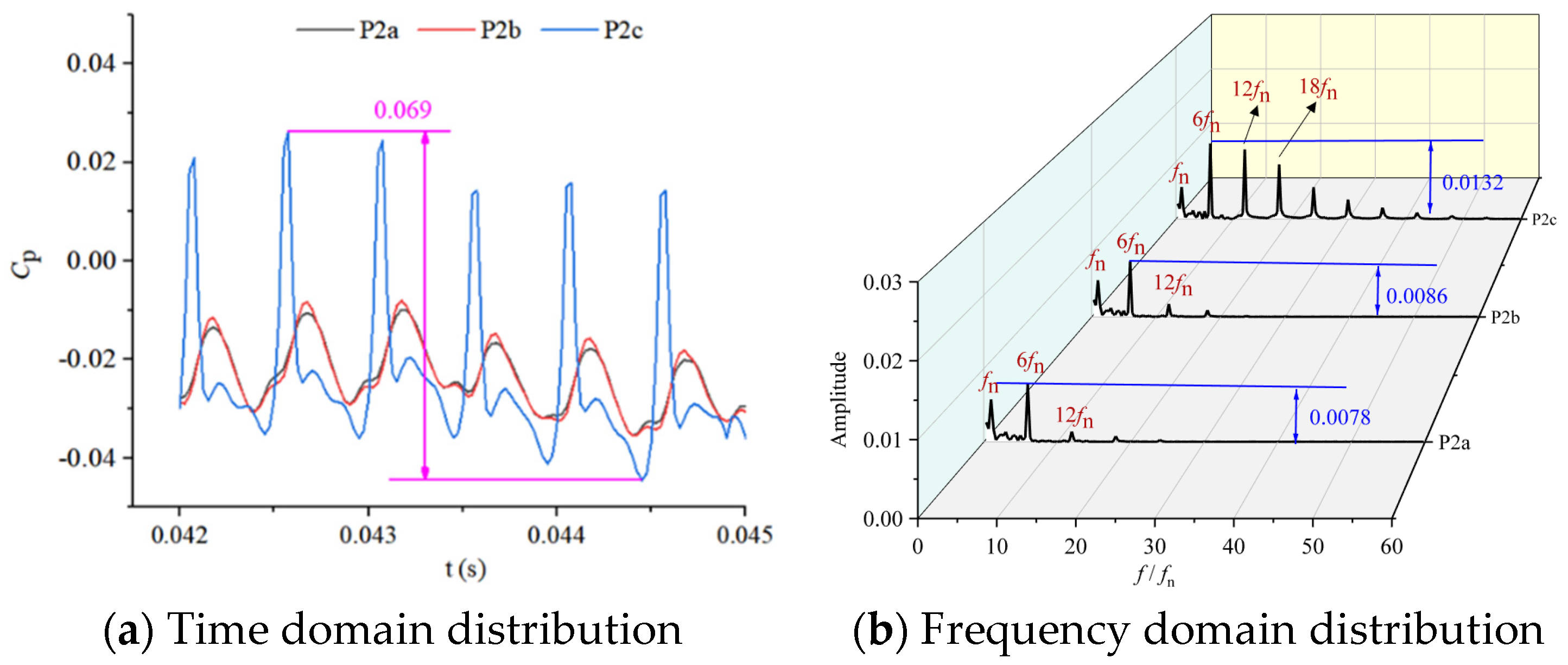
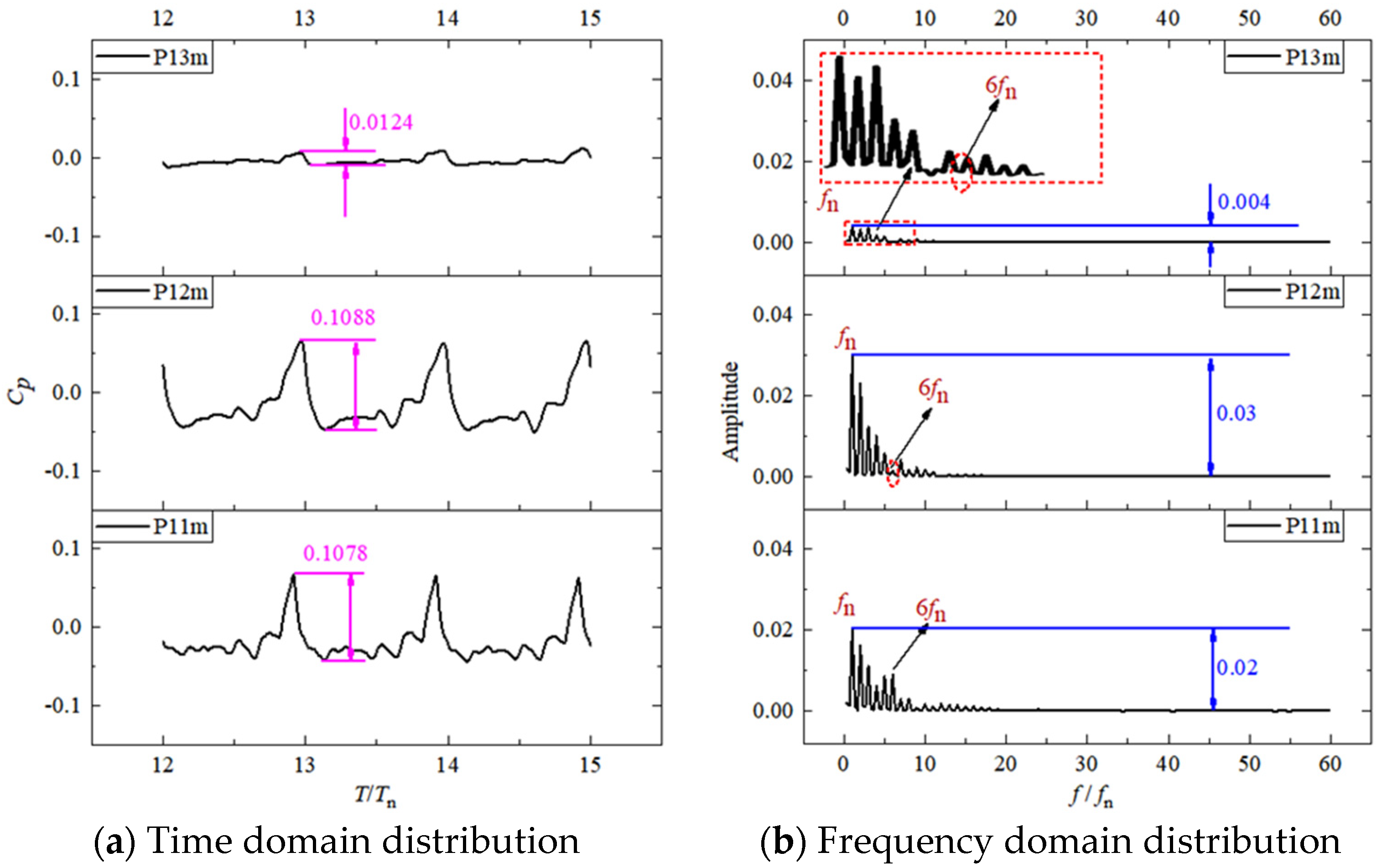
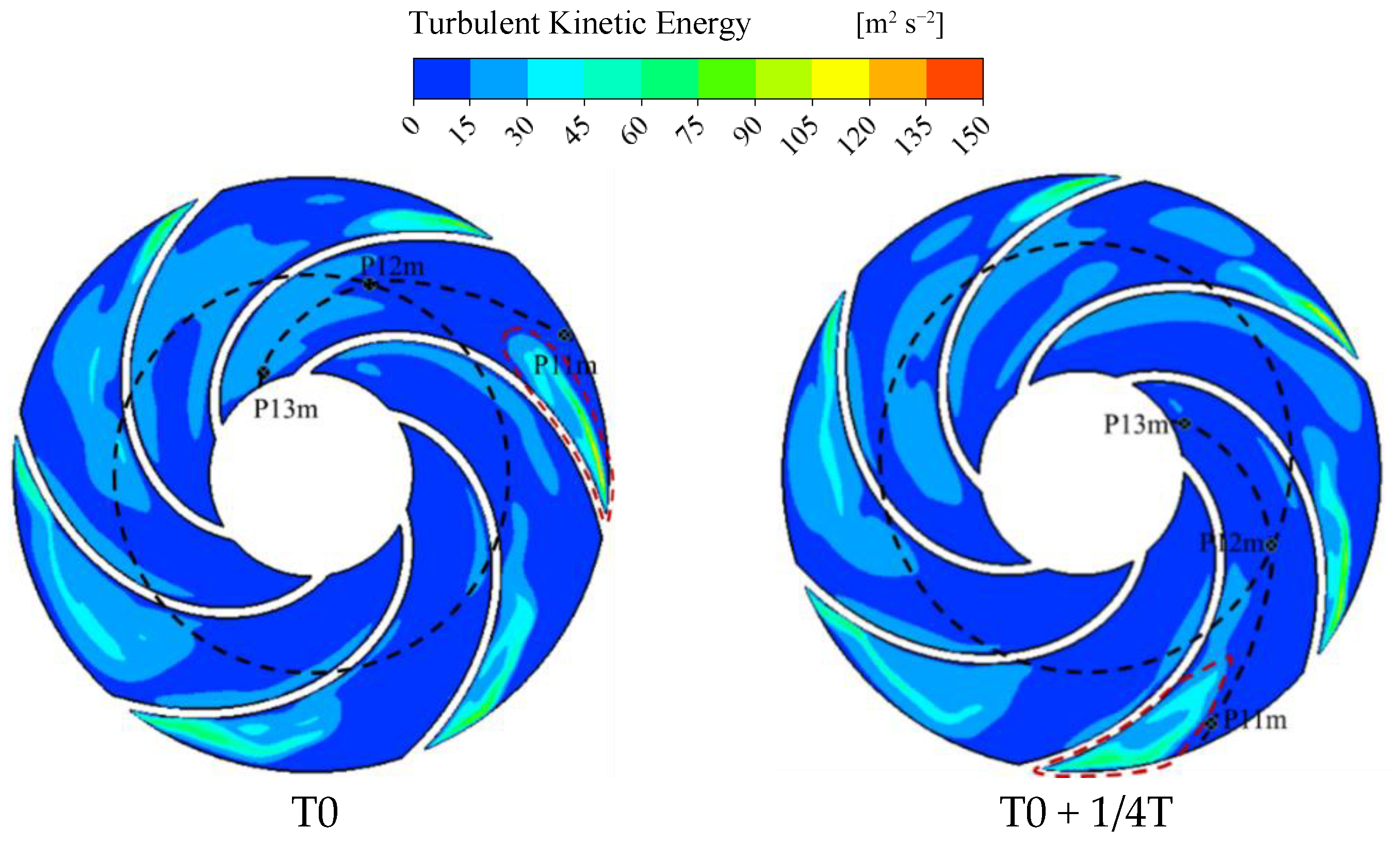

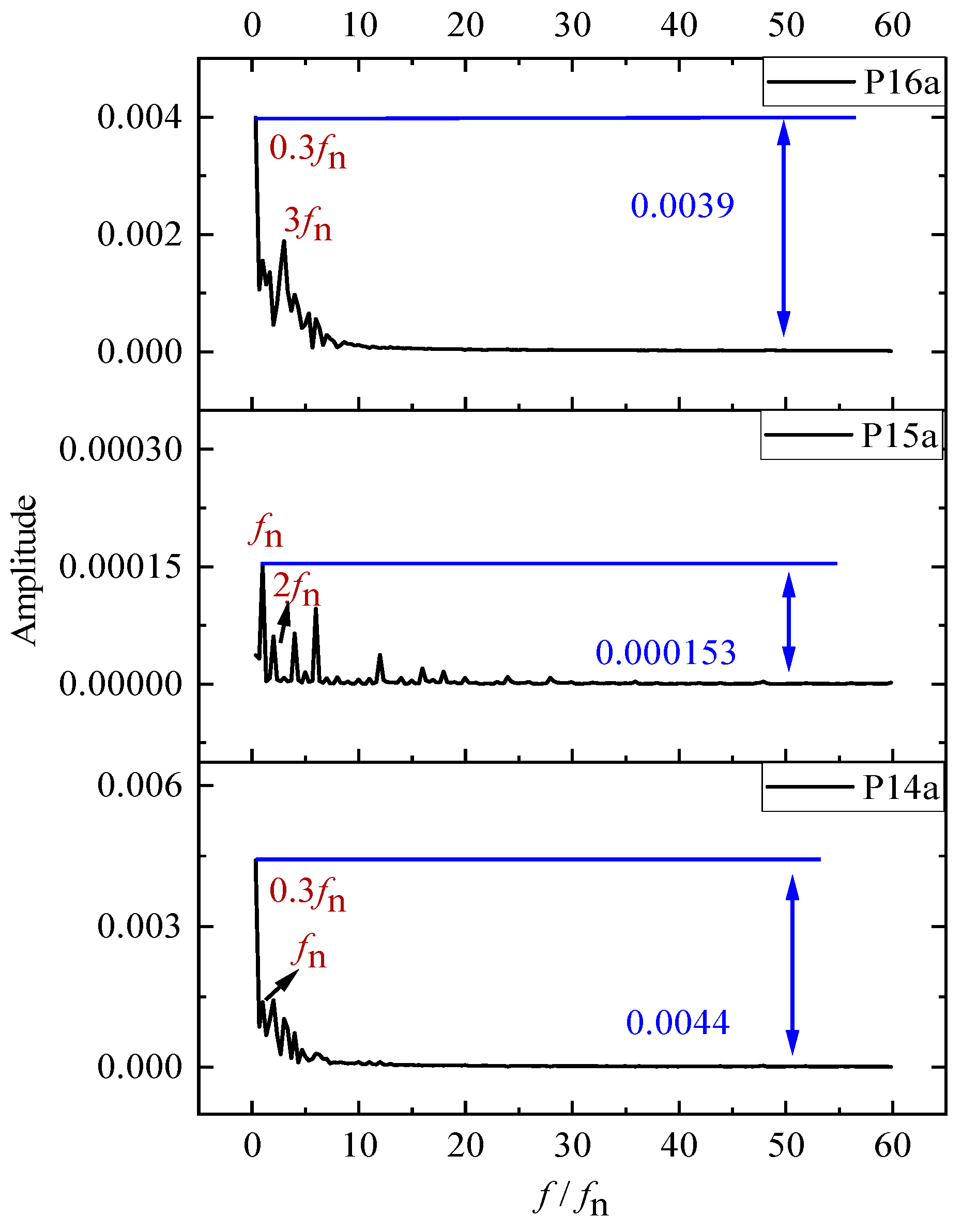

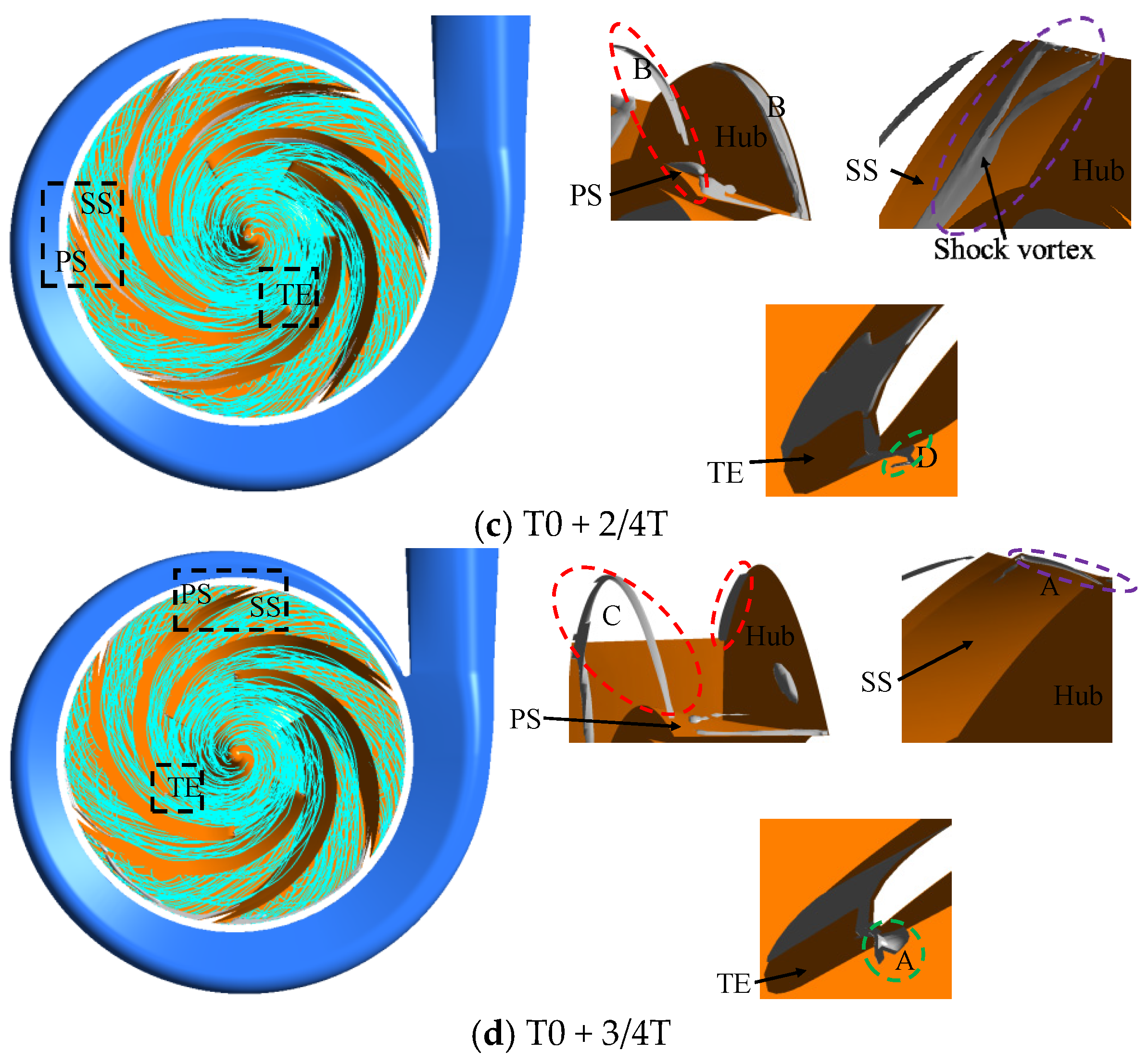
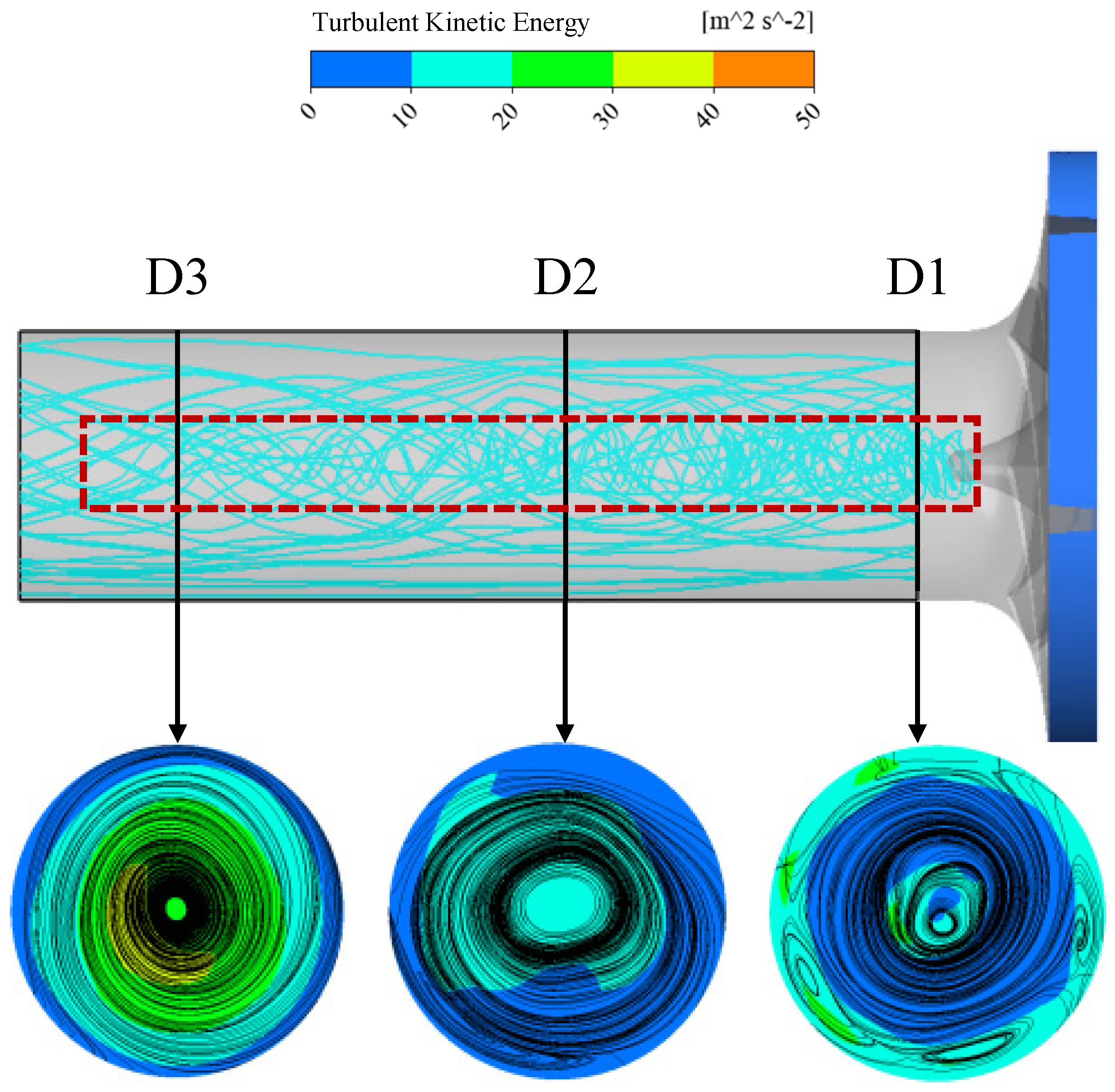
| Performance Parameters | Flow Rate Qdt (m3/h) | Head Hdt (m) | Efficiency ηdt (%) | Rotational Speed nd (r/min) | Specific Speed Nst |
|---|---|---|---|---|---|
| 50 | 500 | ≥80% | 20,000 | 82 |
| Apparatus | Type | Measurement Parameters | Range | Accuracy |
|---|---|---|---|---|
| Electromagnetic flowmeter | MEX-LDE | Flow rate Q (m3/h) | 0–120 (m3/h) | ±0.5% |
| Low-pressure transmitters | MEX-3051TG | Inlet, outlet pressure P (Pa) | 0–1.6 (MPa) | ±0.05% |
| Eddy current dynamometer | CWF11D | Torque M (N·m) | 0–35 (kW) | ±0.4% |
| Rotating speed sensor | ZH07-A | Rotating speed n (r/min) | 1–10,000 (r/min) | ±1 r/min |
| High-pressure transmitters | SCYG310 | Pressure P (Pa) | 0–0.8 (MPa) | ±0.5% |
Disclaimer/Publisher’s Note: The statements, opinions and data contained in all publications are solely those of the individual author(s) and contributor(s) and not of MDPI and/or the editor(s). MDPI and/or the editor(s) disclaim responsibility for any injury to people or property resulting from any ideas, methods, instructions or products referred to in the content. |
© 2024 by the authors. Licensee MDPI, Basel, Switzerland. This article is an open access article distributed under the terms and conditions of the Creative Commons Attribution (CC BY) license (https://creativecommons.org/licenses/by/4.0/).
Share and Cite
Bai, X.; Yang, J.; Yuan, X.; Chen, X.; Qi, B. Research on the Internal Flow Mechanisms and Pressure Fluctuation Characteristics of Seawater Reverse Osmosis Energy Recovery Turbines. Energies 2024, 17, 6461. https://doi.org/10.3390/en17246461
Bai X, Yang J, Yuan X, Chen X, Qi B. Research on the Internal Flow Mechanisms and Pressure Fluctuation Characteristics of Seawater Reverse Osmosis Energy Recovery Turbines. Energies. 2024; 17(24):6461. https://doi.org/10.3390/en17246461
Chicago/Turabian StyleBai, Xiaobang, Junhu Yang, Xueping Yuan, Xiaozhuang Chen, and Bing Qi. 2024. "Research on the Internal Flow Mechanisms and Pressure Fluctuation Characteristics of Seawater Reverse Osmosis Energy Recovery Turbines" Energies 17, no. 24: 6461. https://doi.org/10.3390/en17246461
APA StyleBai, X., Yang, J., Yuan, X., Chen, X., & Qi, B. (2024). Research on the Internal Flow Mechanisms and Pressure Fluctuation Characteristics of Seawater Reverse Osmosis Energy Recovery Turbines. Energies, 17(24), 6461. https://doi.org/10.3390/en17246461






